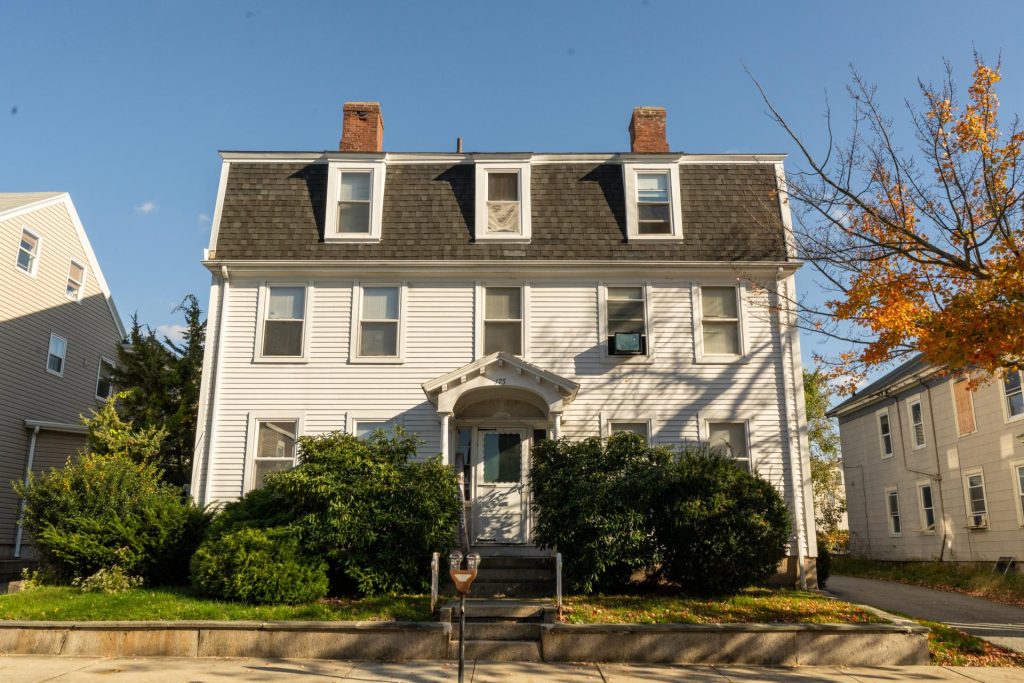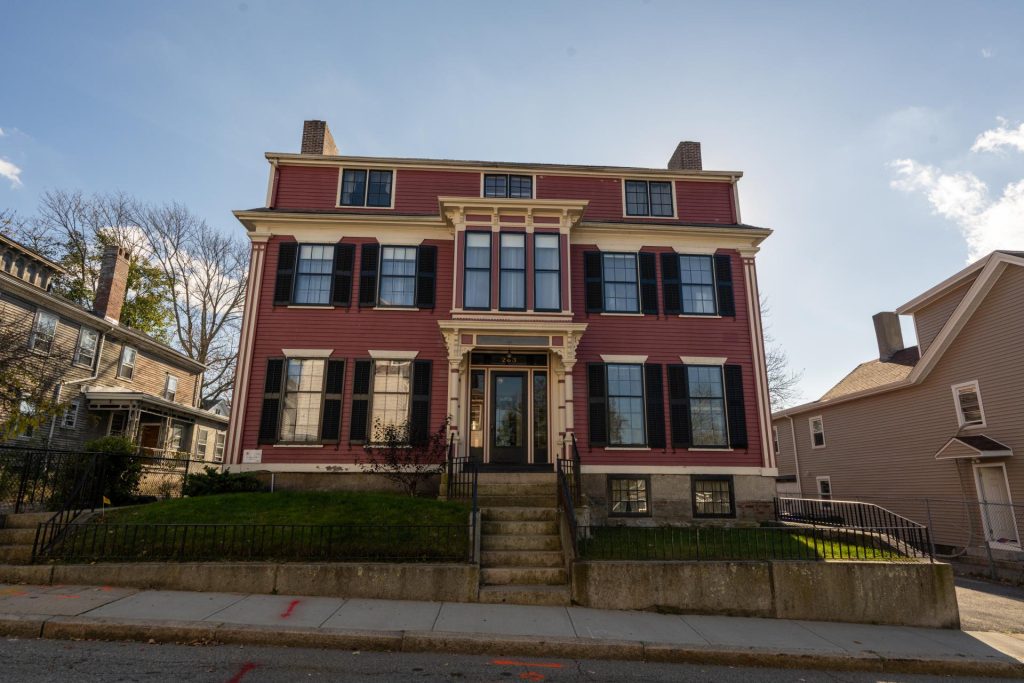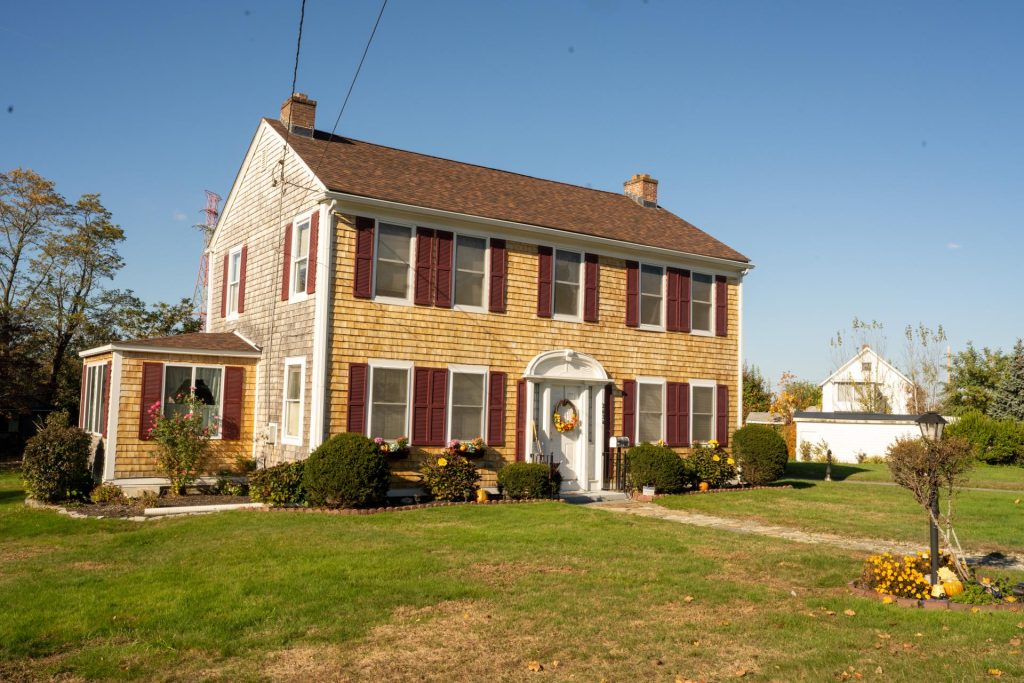The Underground Railroad was a secret network of safe houses on the road to freedom in the north and eventually in Canada, where slavery was abolished. Some abolitionists opened their homes to runaway slaves and a series of conductors aided escaped slaves on the path to safety. The network was carried out at a great risk to all involved given the presence of the Fugitive Slave Law. This law meant that severe punishment for aiding in the search for freedom of an enslaved person was certain.
Fall River was geographically implicated in this network. Fugitive slaves from Norfolk, Virginia were documented as hiding in cargo ships that eventually docked in Wareham or New Bedford. For some, the journey brought them to Fall River before continuing on to Rhode Island and finally, Canada.
Fall River was active in the conversations surrounding slavery. In 1834, 1,000 people gathered at the Baptist Meeting House in Fall River to establish the Anti-Slavery Society with lectures, concerts and fairs organized in support of the cause. The movement was not met with unanimous support, however, and protesters made their voices heard.
The National Underground Railroad Network to Freedom promotes the history of abolitionism and uncovers forgotten narratives related to forms of resistance to slavery. The National Park Service has compiled a list of over 700 Underground Railroad stops and Fall River is represented with the addition of the Dr. Isaac Fiske House to their registry in 2023.
For a visual history watch “Safe Houses: The Underground Railroad in Fall River” by Fall River Community Media HERE.
Keep reading to learn more about Fall River’s role in the Underground Railroad and plan your tour with the map below:
- Abraham Bowen House

The Abraham Bowen House is located at 175 Rock Street in Fall River, MA.
Abraham Bowen Jr. (1856-1948) heralded from a successful family in the cotton mill business. He inherited generational wealth given his family’s long history of agricultural work. When their land was purchased to build textile mills, the family assumed shares in the industry.
Bowen, himself, was involved in the printing enterprise, running his own newspaper entitled Fall River All Sorts, a publication that lasted from 1843 through the 1850s and offered alternative news and gossip not found in mainstream media. The Herald News reports that Bowen’s character included “strong individuality” and “marked eccentricity”. A man of many trades, Bowen and his wife also had a successful grain shipping enterprise in the 1840s, some of the profits of which they employed to support anti-slavery networking.
The house at Rock Street, while now apartments, used to be an active refuge for slaves seeking freedom from oppression.
- Dr. Isaac Fiske House

The Dr. Isaac Fiske house is located at 263 Pine Street in Fall River, MA.
Dr. Isaac Fiske (1791-1873) used his home at 263 Pine Street as a stop on the Underground Railroad. The home was built in 1833, and was inhabited by the prominent abolitionist who wrote in The Fall River Monitor and The Liberator. Notably, Fiske protested against the recapture of Anthony Burns. A homeopathic surgeon and a Quaker, Fiske held fervent anti-slavery beliefs and employed his Fall River home for a dual purpose. Throughout his life it served overt and covert roles as a doctor’s office and a hiding place for escaped slaves seeking the freedom afforded some up North in New England or Canada. In 1861, Fiske led a petition in the city to prevent the hunt and capture of freed slaves.
Local lore states that Fiske opened his home to Henry “Box” Brown, the escaped slave who famously made the grueling journey North in a mailed crate. There is a possibility Brown traveled on the Fall River Line in his search for freedom.
The Fall River Preservation Society reports that Fall River was a common resting place on the route from the landing ports of New Bedford or Cape Cod to end destinations farther north. The Preservation Society has owned the home since 2018 and has plans to turn it into a museum to commemorate its storied history. The president of the Preservation Society, in an interview with the Herald News, spoke on the importance of recognizing the historical significance of Fall River landmarks: “The Fiske House is one of several Underground Railroad sites in Fall River, but none had received the Network to Freedom designation,” Preservation Society President James Soule said. “We at the Preservation Society are excited that the Fiske House is the first in the city to be added to this prestigious network, and we are hopeful it’s not the last.”
- William B. Canedy House

The William B. Canedy House is located at 2634 North Main Street in Fall River, MA.
Squire William Barnabass Canedy (1784-1855) was a postmaster and served in the Massachusetts state legislature which was at the time referred to as the General Court. His house was a station on an Underground Railroad route that led to Cumberland, Rhode Island.
He was married to Susan Hughes Luther (1787-1858) and the spouses had thirteen children together, two of which continued anti-slavery work. During the tail end of the Civil War, Betsey Leonard Canedy and Anne Chalner Graves Canedy journeyed south in order to teach the children of freed slaves.
